How To: MTB Training For Moto
When it comes to fitness and skills training for moto, a large number of riders – from pros to weekend warriors – look to mountain biking as the answer to all their fitness prayers. Why? For starters, it’s is relatively low-impact on the body and is an excellent tool for boosting leg strength, stamina and cardio fitness. Secondly, it involves balancing, line selection, jumping, braking and explosive power – all techniques you’ll use from the trail to the moto track. Add to that it’s extremely good fun, and a clear message begins to emerge: If you’re not already into it, then you’re missing out… like someone who thought the Atkins diet was better than Jenny Craig’s tried and tested approach.
But it’s not all about skipping down to your local deadly treadly shop, buying the trickest fixie you can afford, driving to the local downhill course and going hell for leather in an effort to reap the direct benefits mountain biking is well known to provide. For this edition of How To: MTB Training for Moto, we enlisted the expertise of Amiel cavalier to explain three crossover techniques – steep descents, powering up hills and smooth cornering – between moto and MTB that’ll boost your petrol-powered game to an all-new level. Who is the aforementioned cavalier? with a 2005 UCI world Junior downhill championship crown and a 2010 AORC Expert E2 championship title in the bag, the guy knows how to ride dirt. So we threw an acid green Ibis Mojo Hd and a Yamaha WR450F under him and sent him bush for a lesson in MTB training for moto. Take it away, Amiel…
This content was originally published in issue #22 of Transmoto Dirt Bike Magazine in Aug, 2012.
The Approach
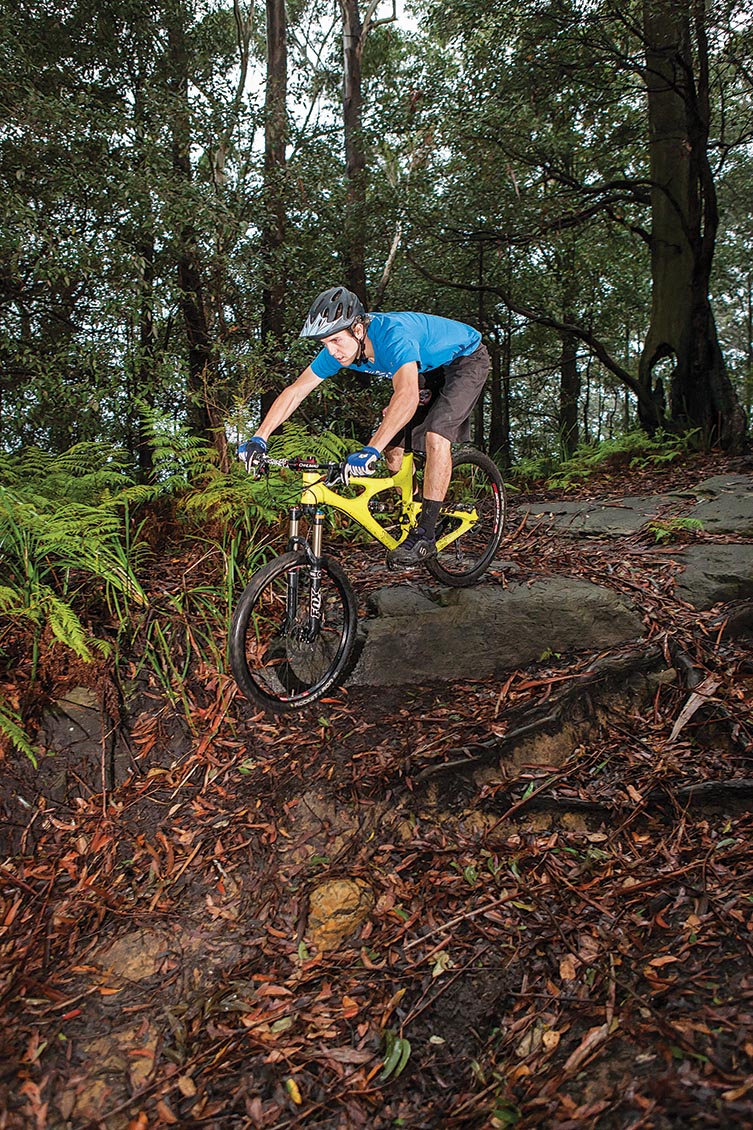
It’s almost silly how similar charging downhills on mountain bikes and dirt bikes are. Areas such as line selection, weight positioning, looking ahead, braking correctly and flow are all very important. But what you really have to keep in mind when charging down hills or flying off gigantic ledges is that mountain bikes are feathers compared to the weight of dirt bikes and this makes them super-twitchy by nature, so picking the smoothest line plays a vital role to descent speed and control. After you’ve picked your line and you’re approaching the drop (see image), make sure that you’ve done all the necessary braking beforehand. The last thing you want to do is lock the brakes up on the slimy ledge and slide right off it. This will also ensure your bike is lined up straight and pointing in the right direction.
Powering Through
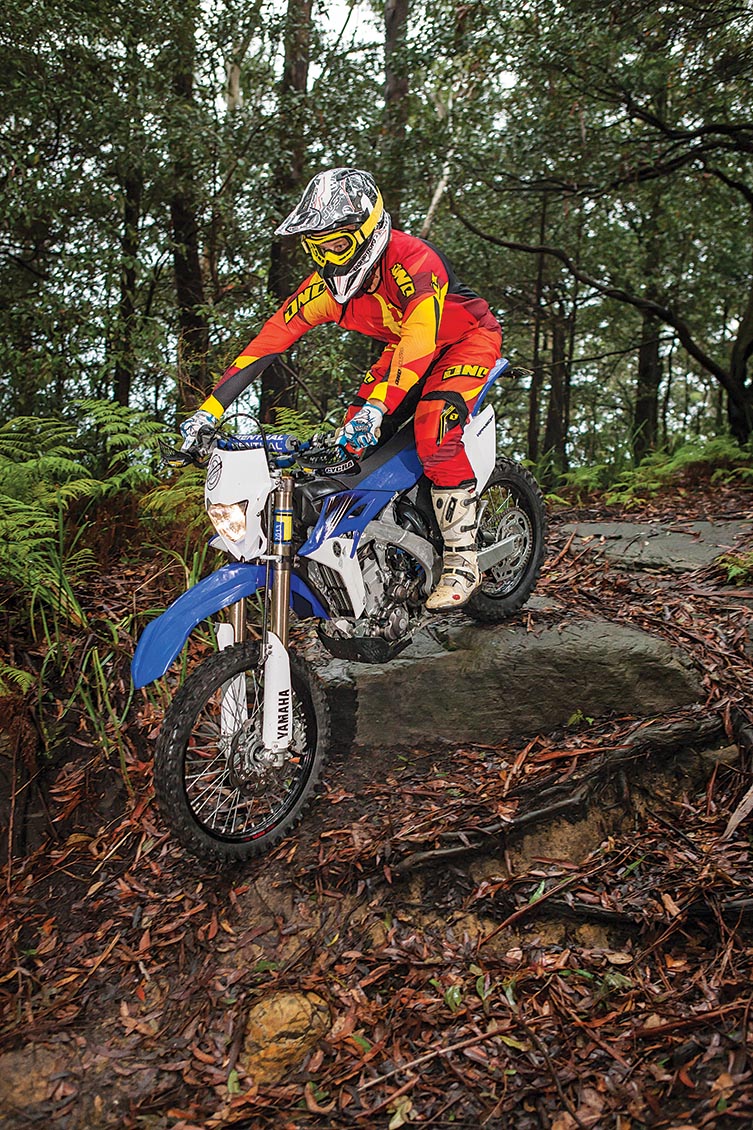
Speed is also a big factor; if you’ve got plenty of confidence on both the pushie and the moto, you can attack the descent wide open. But you’ll have to land with the power on – pedaling like crazy or the throttle cranked open – and pre-determining the direction either bike will take when it bounces off boulders and ledges you’ll no doubt smash into. For the sake of this demonstration, however, I’ve taken the drop a little slower – just enough to pop off the rock on both the moto and the MTB, using gravity to maintain my momentum. Just before the front wheel has left the ledge, my weight is transferred to the rear of the bike. I’m looking well ahead at the next major obstacle I might have to miss, my core is locked and my elbows are out to aid the action of the suspension. As soon as the wheels have touched down, I’m applying a small amount of front and rear brakes to control speed and steady the bike. And my focus has shifted to finding the smoothest line down the rest of the descent. By now, you’ve probably also noticed that my body position and the bike’s attitude are exactly the same as they are on the dirt bike.
Charging Out
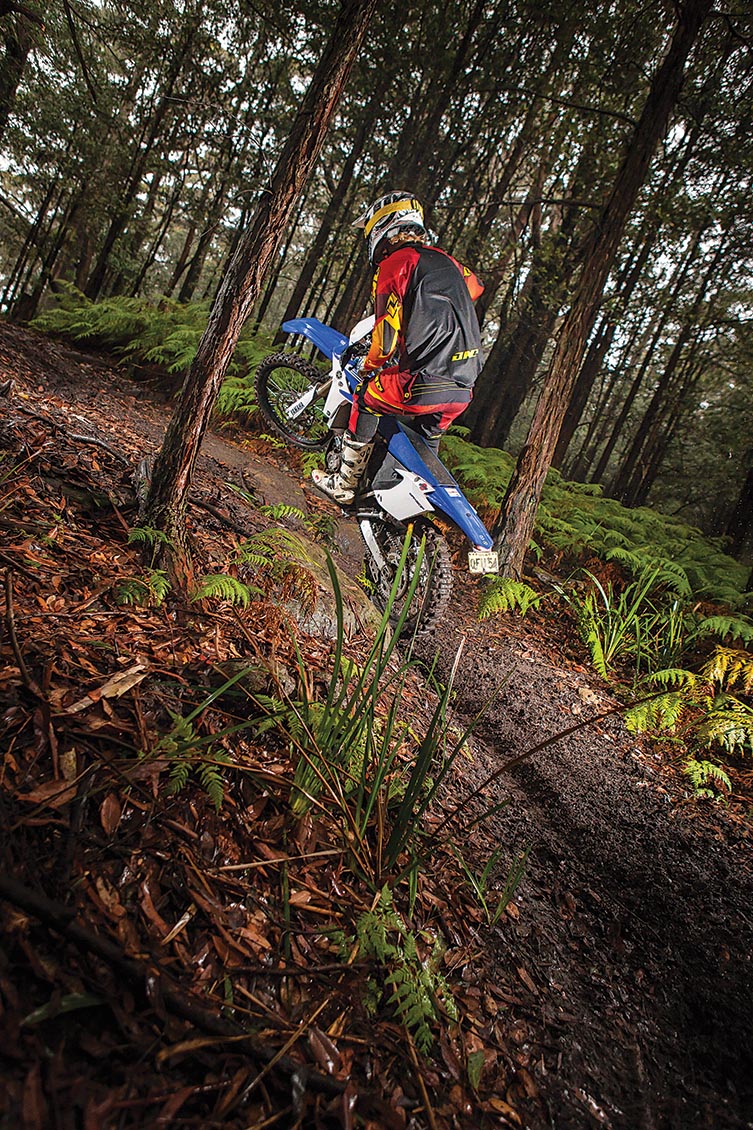
Exiting and charging down the remainder of the descent is probably the only area that differs between mountain biking and moto, which is why initial line selection is so crucial. Unlike a dirt bike, you don’t have a throttle to twist if you get into trouble on a pushy, but if you do get cross-rutted or punched off line it’s important not to fight the bike. Instead, use its suspension and lightness to pre-jump and pop off ruts and ledges, all the while staying fluid and giving the bike an opportunity to work underneath you. In principle, using a MTB to fine-tune your descent skills on a dirt bike is an excellent way to focus your ability to choose smoother lines quicker and you’ll develop a lot more confidence in the process.
Facing the Hill
Mountain biking up hills, especially rough technical ascents, requires good momentum that’s usually generated at the base of the climb. While smooth climbs are relatively straightforward and good for base training for moto, you should aim to take the tougher line. Having to cross tree roots or pop over rock ledges as you grind away will skyrocket your fitness and endurance levels, while honing the way you see climbs as an obstacle on a dirt bike in the future. Grinding up a hill on a pushy – in much the same way as a dirt bike – is very much related to technique over outright power or muscular strength. Balance and body position are super important as they dictate how well you can maintain your momentum and traction while wheelstanding or popping over anything that threatens to rob you of a smooth ascent. At the same time you’re honing your balance, weight distribution and body positioning, hillclimbing is also a great way to improve your cardio and leg endurance. But there’s a knack to doing it smoothly and efficiently.
Scaling Obstacles
Although not extremely steep, the ground for the majority of this ascent was muddy, which acts like adding extra weight resistance at the gym on your legs. While holding my momentum and heart rate steady throughout most of the climb, it’s only near the top that I’ve had to attack a technical rock feature. This type of scenario is perfect for practicing to make you a better hillclimber on a dirt bike. Like the muddy conditions I’m cycling in, the rock ledge is wet and covered in moss, which threatens to ruin my steady ascent. However, instead of trying to cycle around it, look at attacking it front-on and riding confidently on. This is the only way you’re going to reap the most reward for any future moto experience. How, you ask? Well, just like you would on a dirt bike, pull a small wheelie and aim to tap the front wheel somewhere around the top three-quarters of the ledge. This will bounce the wheel up and over. The key here is to stay balanced, centered and in the standing attack position. Using a combination of power, bodyweight and pulling upwards with your arms, force your legs to soften and allow the rear wheel to roll up and over the ledge. If you try and push hard in the cranks you’ll run the risk of breaking traction.
Don’t Stop
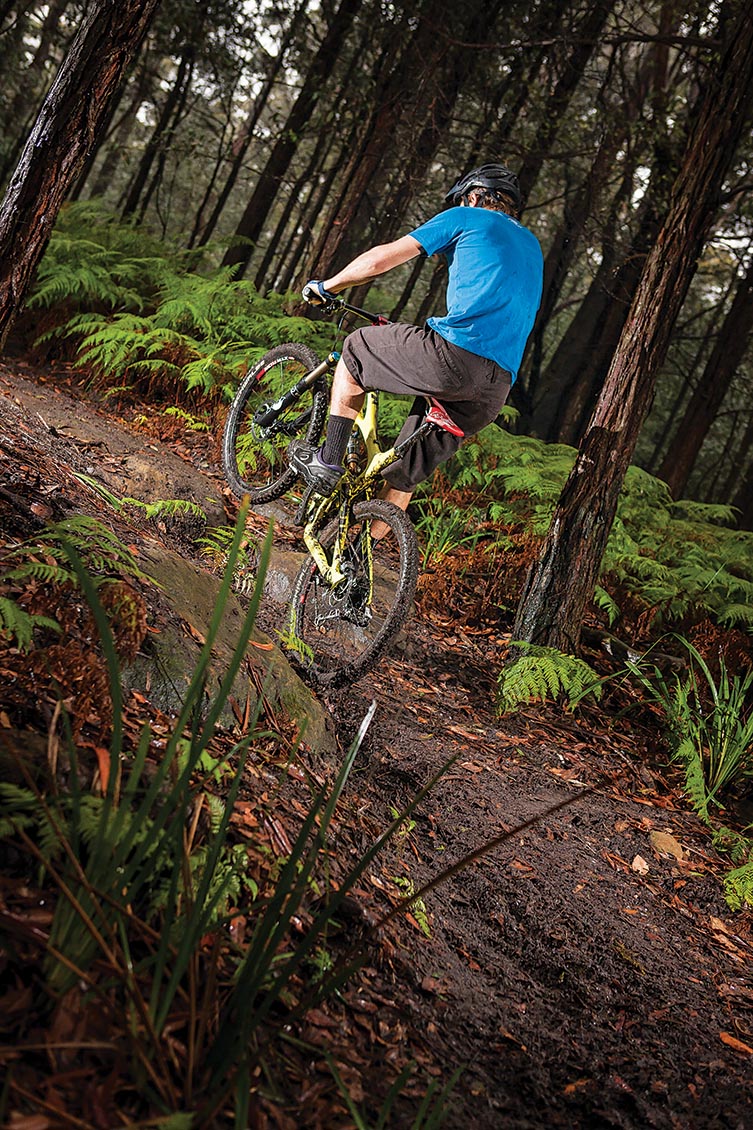
Once the rear end has made it smoothly over the ledge, I’ve dropped the front wheel back down, moved my bodyweight back slightly – depending on the remainder of the ascent, of course – and focused on maintaining my pedaling tempo no matter how bad the leg burn until everything begins to flatten out. Practicing powering up hills and over obstacles on a MTB can teach you a great deal of balance and control that’ll transfer directly to dirt bikes. Activating your core throughout the entire execution and long bouts of peddaling while standing puts a lot of stress on your arms and legs, making it an excellent exercise for aerobic endurance training. If you’re really keen, attack short hillclimbs with maximum intensity and then pedal off the pain along the next flat. This will help your breathing and heart rate to cope with maximum bursts of speed on a dirt bike.
A Lesson in Smooth
Of course, what goes up must come down and there’s nothing like ripping switchback downhill corners will confidence. Maybe not so applicable for the moto track, but when it comes to trail riding where there’s rocks and trees to scoot between in order to line up corners, training on a mountain bike will really help hone your cornering technique for moto. Cornering at speed on a pushy is all about flowing through the apex and exiting with the same speed as you entered with. Of course, on a dirt bike you’ve got a throttle to abuse, but learning to corner without ripping the throttle open will make you so much faster in the tight stuff and you’ll save a heap more energy as well.
Setting Up
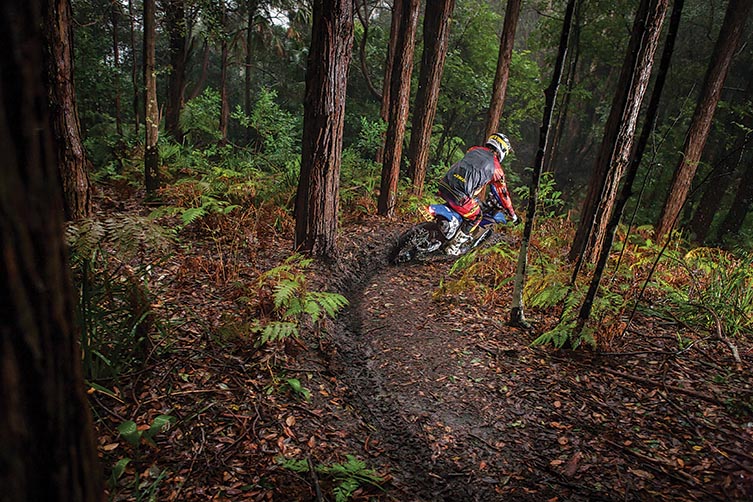
For this particular downhill right-hand turn, the entry was relatively smooth, but I’ve approached it as wide as possible, which should be the aim every time you attack corners on MTBs. Only when your entry line gets chopped out with braking bumps should you start looking for a smoother, tighter line option to limit the rear-end of the bike from bouncing around. In fact, the very same principle applies on a dirt bike. Once I’ve settled into the line that will eventually slingshot me through the apex, the next vital element to maintaining speed is where you apply the brakes. Just like in a car on asphalt, you should never brake deep into a corner and through it. Setting up your entry line and getting your braking done early leaves a split second where you can correct your body position, settle the bike and focus on that exit point. Braking too deep will only disrupt your flow.
Hitting that Apex
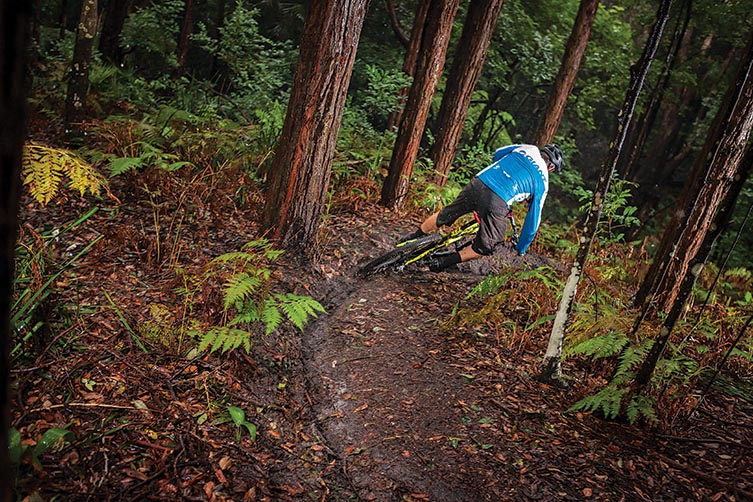
At this point in time, I’m pretty much riding the mountain bike exactly like I am on the dirt bike. And the key here is that I’m standing, not sitting. Most trail corners on either moto or MTB will suit a standing attack position better than disrupting the bike’s handling by constantly sitting and standing; so practice hitting the apex standing with your elbows high to aid the bike’s suspension. Your inside leg should also stay glued to the peg/pedal, while your outside foot pushes down hard to weight that side of the bike. This will help push the tyres into the ground and create extra traction. Although there’s not really a fitness benefit in practicing cornering on a pushie for dirt biking, what you are teaching yourself is confidence in your equipment, how much traction you have to play with and just how far you can push your limits
Rider Profile
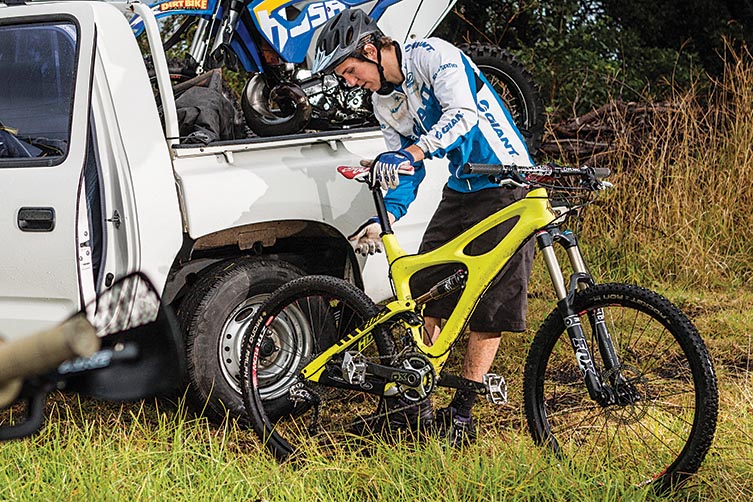
Raised in Wollongong, NSW, Amiel Cavalier may ring very few bells in the broader off-road community, but the 25-year-old is one of the few athletes in the world to claim a World Junior Downhill MTB Championship crown as well as a handful of National and Oceania titles. The guy’s even spent five years travelling the globe representing Australia for the Giant Global MTB team and squeezed in a 2010 AORC Expert E2 title, so he knows how to ride two wheels fast. Amiel was more than willing to offer up some of his vast experience for this edition of How To: MTB Training for Moto.
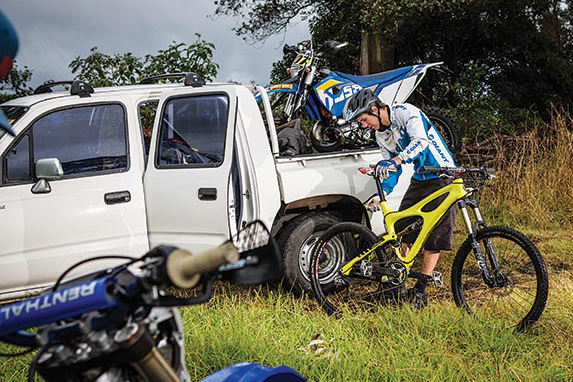


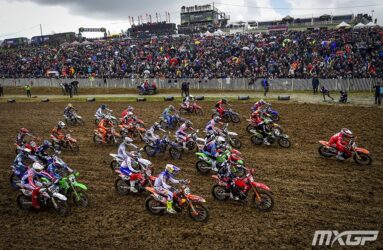


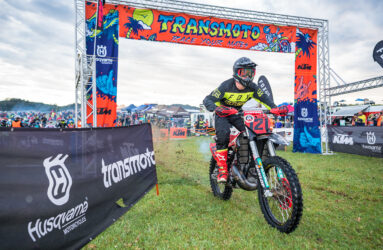


Be the first to comment...